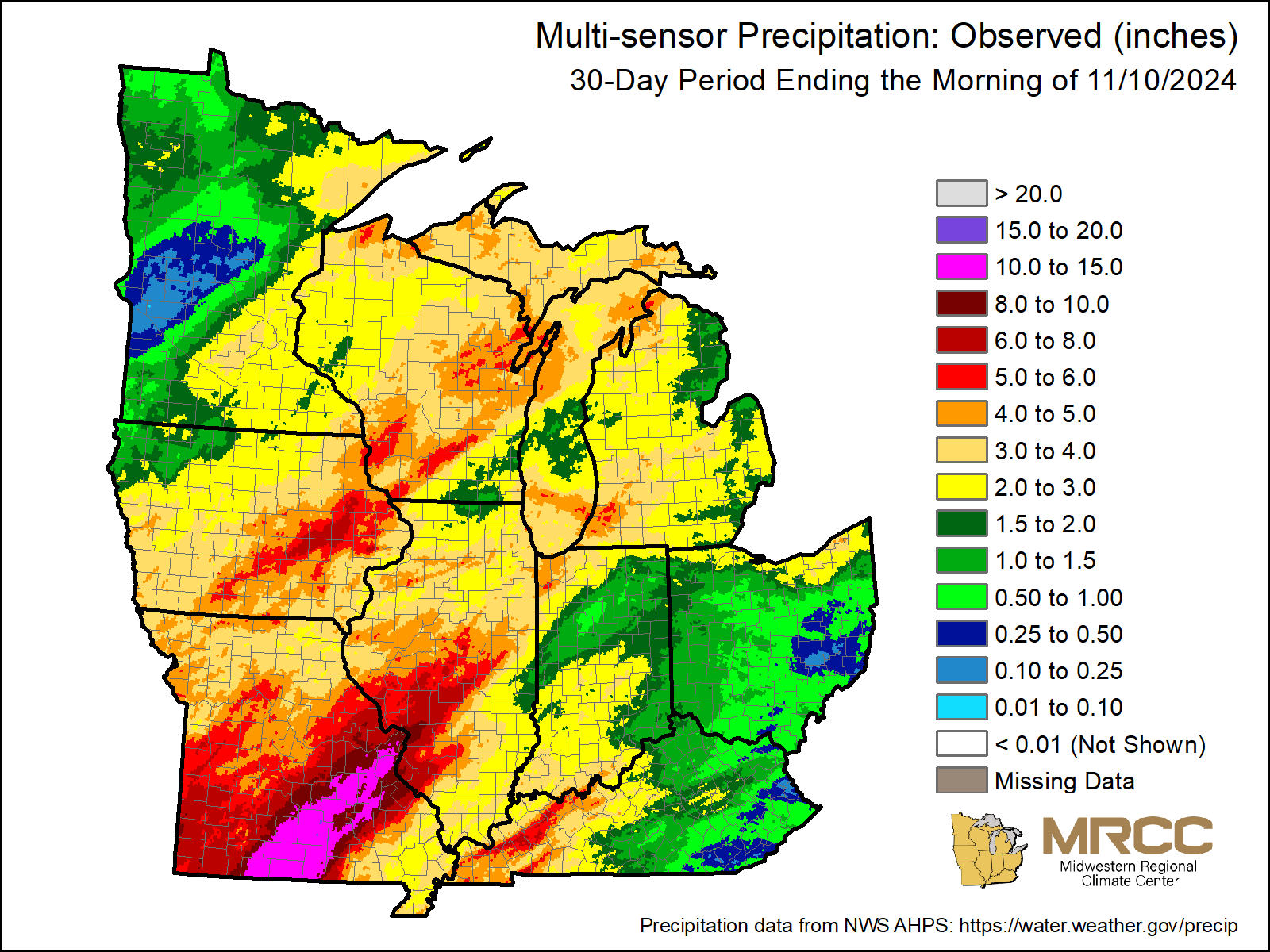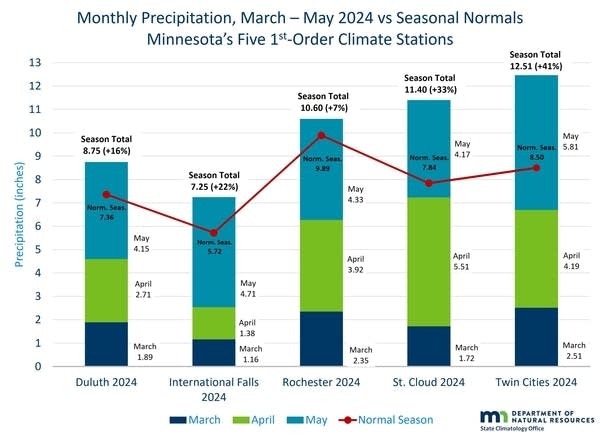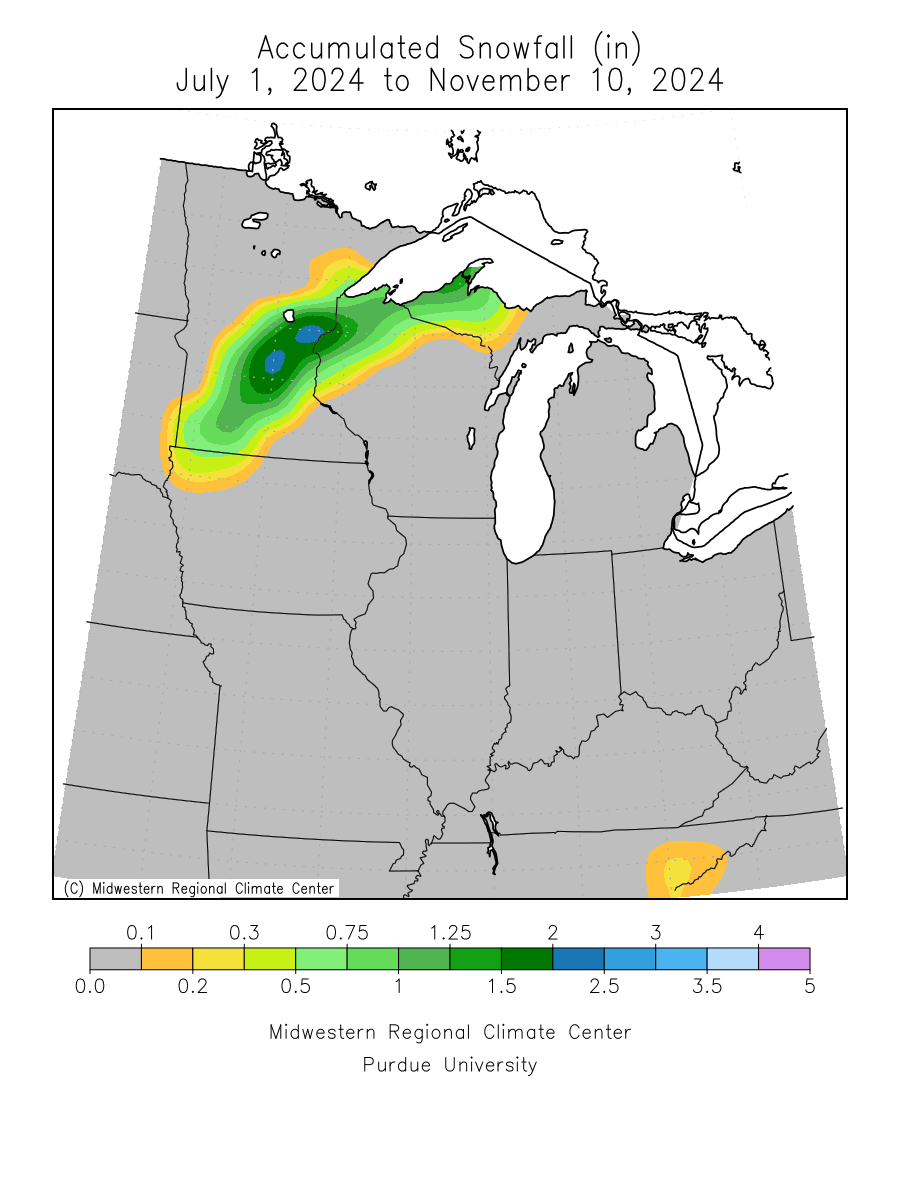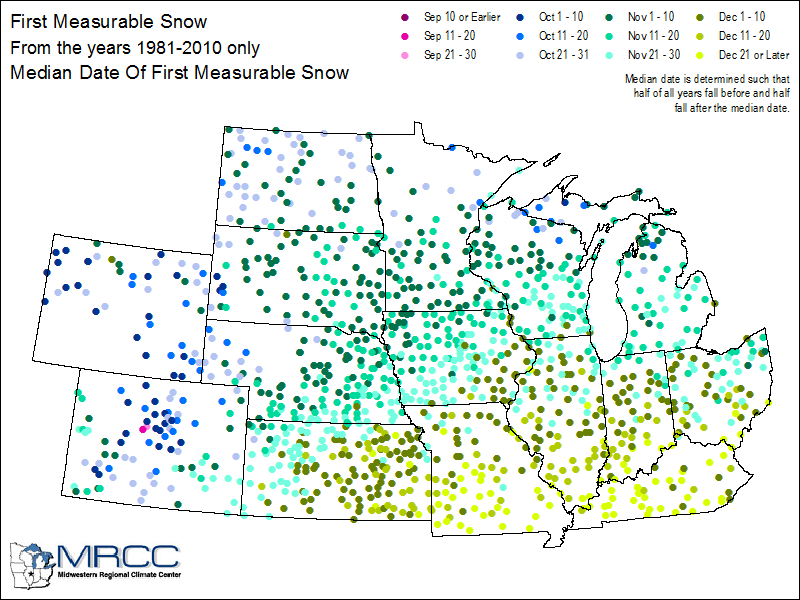Precipitation deficit continues despite recent rainfall
Yearly amounts still trending above average

Go Deeper.
Create an account or log in to save stories.
Like this?
Thanks for liking this story! We have added it to a list of your favorite stories.
November has started off wetter than usual, with several weather systems moving through since the Halloween rain and snow event. Despite the much needed rainfall, we continue to see precipitation deficits since early September.
Fall precipitation amounts
Since Halloween, Minneapolis-St. Paul has recorded 2.41 inches of rainfall. The map below shows precipitation amounts over the past 30 days, highlighting that central and southeastern Minnesota, as well as northeastern parts of the state, have received the most rainfall.
These recent precipitation events have all followed a similar track, moving from the Four Corners region in the southwestern United States northeast toward the Great Lakes.

Since Sept. 1, we've received a total of 2.47 inches of rainfall, well below the average of 6.17 inches. This leaves us 3.70 inches short of where we should be for fall precipitation.
Turn Up Your Support
MPR News helps you turn down the noise and build shared understanding. Turn up your support for this public resource and keep trusted journalism accessible to all.
Yearly precipitation outlook
When looking at overall yearly precipitation, we're still trending above average, largely due to the exceptionally wet spring we experienced. Our state actually became drought-free.

The graph below illustrates the yearly amounts with the current year (black line) running above normal (green line). However, our precipitation trend flattened out from September into October. September was the driest on record, and October tied for the fifth driest.

Fall is the critical time to replenish soil moisture, as cooler temperatures and reduced plant activity make water absorption more efficient. Summer time the water evaporates faster, putting less rain into the soil. This is how plants establish strong root systems before winter, helping them in case of spring drought conditions.
Snow helps, too!
Our other favorite form of precipitation — snow — has already made its presence felt this season. Portions of Minnesota have received snowfall totals ranging from a few tenths of an inch to several inches.

While the forecast models aren't showing many chances for snow in the near future, the map below shows that we're right around the average time for the season's first snowfall.

Whether it’s wet or white, any precipitation that comes our way will be a relief.



